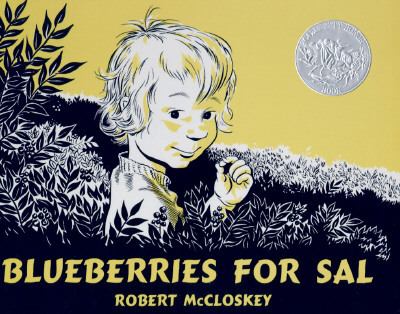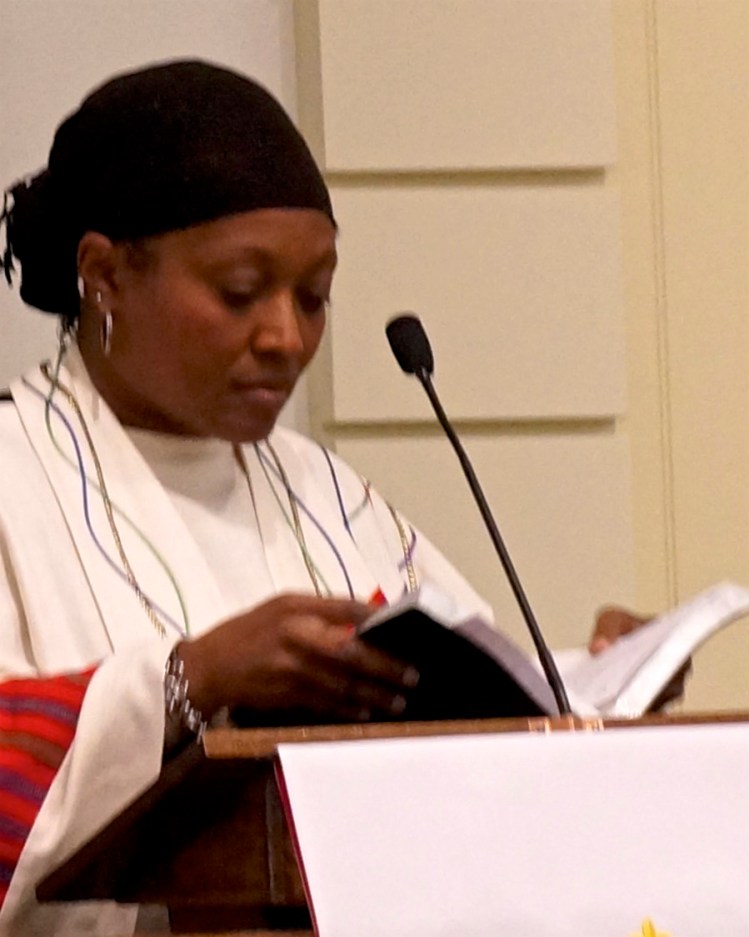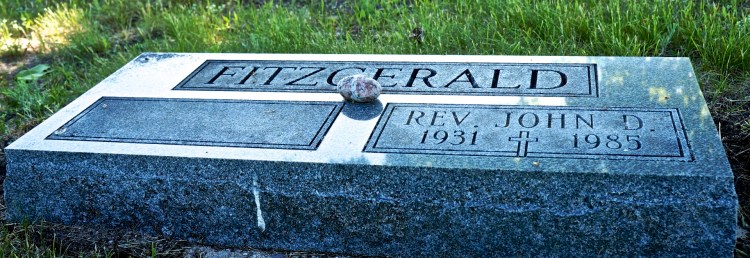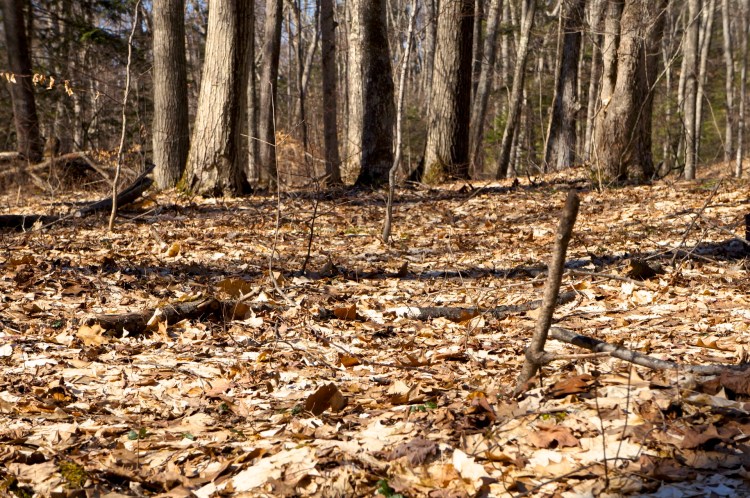Northport, Michigan is home to a number of amazing people. Among them is Phil Thomas. On Thursday, he spoke to around three dozen of us about his life journey and what he believes to be true regarding our economic situation in the US.
I encourage you to take the time to read his life wisdom. He told us he is 87 1/2, so this is about what he has come to believe over the decades of his life work . . .
What have you come to believe because of what you have been up to all these years of your life in the world as we know it?
Your comments and observations about this post, as always, are welcome . . .
Phil said, any speaker who knows anything about anything begins with a joke . . . here was his:
A doctor and an economist went to heaven. As they were waiting, the pearly gates opened, the angels inside were lined up playing their welcoming trumpets, and St. Peter came out. He embraced the economist and led him through the gates, which closed right in front of the doctor.
The doctor was bewildered, but saw in a tiny door next to the Pearly Gates, there was a guard beaconing him to come in. As he entered, he asked the guard, “What’s going on?”
The guard chuckled, and said: “Why, we have over a dozen doctors coming here every day, but we haven’t had an economist in over 100 years.”
And then Phil said:
The Opinions of One Economist
(Philip S. Thomas, Cracker Barrel, June 16, 2016)
INTRODUCTION
I am 87 ½ years old, and I have started to reminisce about the past, wondering where the time has gone, what experiences I have had, and so forth. In particular, for the past 65 years I’ve been an economist, so I started writing down how economics has changed over the years, and how I have evolved from conservative to liberal and back again, until I now believe these labels are useless… or worse, as they interfere with clear, unbiased analysis of issues, problems, and policies.
In mentioning my economics reminiscing to Mike Sinclair, he thought this might be a good topic for the Cracker Barrel, so here I am. I don’t know whether Mike is to be thanked or condemned. (Time will tell!)
As background, to set the context, I have to define economics. Then I’ll briefly describe my background and the evolution of my thinking. Finally, I will give, and try to explain, my opinions on seven current issues. Of course, we want to have plenty of time for the Q&A.
WHAT IS “ECONOMICS”?
A textbook or dictionary definition of “economics” is not as good as one given by a professor of mine, namely, “Economics is what economists do!” Initially that may seem circular and useless, but let me try it. Economists study prices and incomes, individually and by industry, by geographical area, and for the country as a whole; we collect statistics on prices and incomes, we try to understand why they rise and fall, and to assess the consequences of these changes. We study the banking and financial system, imports, exports, and the balance of payments (international economics being my special focus). Similarly, we analyze certain issues such as the overall health of the US. Economy, unemployment, inflation, the balance of payments deficit, returning to the gold standard, the federal budget deficit and the national debt, and raising the minimum wage. I will comment on these issues below.
A while ago, my sister-in-law Marilyn asked me an economics question, which I thought I answered quite well. As soon as I finished, however, she said, “Phil, isn’t economics just a matter of opinion!”
I suspect that many of you would have said the same thing, so I want to address this issue right now.
In experiments in the physical sciences, variables can be quite well controlled, so that to a large degree “facts” are facts and can be agreed upon, and most theories can be tested and re-tested. There is an established scientific method of seeking and often finding the “TRUTH”.
Although the Economics Nobel Prize is publicized as honoring work in Economic “Science”, I would hesitate to use that term.
One of my Michigan professors, Dr. Lawrence Klein, won the Nobel Prize in large part because he was the father of econometrics. Among economists, econometricians come closest to being scientists. They combine economics, math, and statistical analysis. They state their hypotheses carefully in rigorous mathematical terms to make certain that they are clear, complete, logical, and internally consistent. They then apply the most sophisticated statistical tools in analyzing the facts to determine the correlations among key variables, and to ascertain the significance and importance of these correlations in establishing cause and effect.
This work is impressive, but in economics, there are too many variables, they cannot be controlled, they are ever-changing, and we have to use statistics which are never perfect; they are inadequate for guaranteeing 100% “TRUTH”.
So, yes, Marilyn, in economics there are differences of opinion, and even econometricians disagree. But “NO”, Marilyn, economics is not JUST a matter of opinion. Rather it is matter of probabilities.
One of my economic colleagues said, only half-joking, that economists not only can NOT predict the future, we cannot even “predict” the past. That is, no one is 100% certain about the causes of the Great Recession of 2008, but we can estimate probabilities regarding the importance of the housing bubble, or the large dollar holdings by China, or excessive risk-taking by banks. We can apply econometric analysis, and we can try to use the “scientific method”, but we will always have to supplement it with practical experience and judgement. Economics is a discipline based on probabilities.
So much for defining economics. How have I evolved?
HOW I EVOLVED AS AN ECONOMIST
I was born a conservative in Hinsdale, Illinois, where, if there were any Democrats at all, they were few in number and they remained in hiding. In 1933, at four years of age, I sat on the lap of Republican ex-President Herbert Hoover, who had just turned the White House over to Franklin Roosevelt. He was visiting a Hinsdale friend, who happened to be a neighbor of ours. At five or six years of age, I met the Republican Vice President under Cal Coolidge, Charles Dawes, winner of the Nobel Peace Prize, musical composer, and, fortuitously, President of my dad’s bank. Dad took me up to his office one day for a 30 second handshake. I forget what issues we discussed.
I graduated from high school as a solid conservative.
Then I went to Oberlin College, which was and is one of the most liberal colleges in the U.S. I became a Democrat, which I remained through my graduate years at Michigan. However, as I began working inside foreign governments (six in all, from 1963 to 2000), I learned first-hand about waste, inefficiency, crony capitalism, and corruption. Reading Milton Friedman and Friedrich von Hayek during these same years, I shifted back into the conservative, anti-government camp, although I never became extreme.
I like the saying, which one of you may have told me:
“If you’re not a liberal when you’re 20, you have no heart.
If you’re not a conservative when you’re 40, you have no brains.
If you’re not a reactionary when you are 60 you have no money.”
These days, the world is so complex, I’ve added another line:
“If you’re not confused when you’re 87, you’re not thinking clearly.”
Some old men become set in their ways; they are dogmatic and rigid, thinking that they have seen everything; they know what they think, and there is no need to change their minds. I consider myself just the opposite, increasingly uncertain about what I really know, and open to new ideas. This is one of the reasons I decided to write down my thoughts about economics. What do I think today, and why. I am no longer either a “conservative” or a “liberal”. I am a “REALIST!”.
A decade ago, Alan Blinder, a well-known economist and a Democrat who served on President Clinton’s Council of Economic Advisors, wrote a popular book in which he said: “Democrats have soft hearts, but soft heads. Republicans have hard heads, but hard hearts.” He argued quite simply and eloquently that we all should have hard heads and soft hearts! This is who I think I am: a person who is socially liberal, but who believes in competitive capitalism (not crony-capitalism) and who believes in the competitive market system, with a major role for the free play of SUPPLY AND DEMAND .
Here are seven issues which may be a test of where I stand. However, after the Q&A, depending on the arguments you-all make, I may well change my mind and hold different views.
CURRENT ECONOMIC ISSUES
- HOW WELL IS THE U.S. ECONOMY DOING OVERALL?
Join me in a mental experiment. Consider a country we shall call “X”.
– More immigrants choose to come into X than choose to go into all of the other countries in the world combined.
– Further, when people all over the world are considering where to place their money – where to invest — more choose X than any other country.
– Further still, X’s currency (money) is considered the safest and most valuable for paying for goods and services from every country in the world to every other country, and several other countries actually use X’s currency inside their countries as the main medium of exchange, instead of their own currency.
– Finally, the financial assets which are considered the very safest in the world are the bonds issued by the government of X. That is, the government of X is considered the most likely to pay off its bonds when they come due. The X government (and the X economy) are considered the strongest and the most reliable in the world.
If these four things are true, I would consider the economy of Country X to be in pretty good shape, and I assume that you would agree.
Of course, you recognize that Country X is The United States during the past few decades. These days, immigration from Syria to Europe is, of course, much higher than U.S. immigration, and there are modest, short-term exceptions to the other statements. But basically and overall, the U.S. economy is doing very well, in spite of our problems and legitimate criticisms. This is my 1st opinion, which I give a 95% probability of being correct: The U.S. economy overall is doing very well.
- HOW BAD IS UNEMPLOYMENT?
During the 2008 financial meltdown and Great Recession, unemployment rose to 10%. Since then it has fallen steadily by half, to about 5%, and in April it was only 4.7%. Back in 1933, it reached 25% (one-fourth of the labor force was unemployed), so even 10% is not terrible for a recession, and last month’s 4.7% is considered “Full Employment” by most economists. Critics will argue that people have given up looking for a job, so they aren’t counted as being in the labor force, so they are not considered unemployed. This is correct, but the same was true in 2008 (when so-called “true” unemployment might have been 20%, and in 1933, when it might have been 40%. My point is that a consistent measure of unemployment reveals that it has fallen to one-half of what it was in 2008, and we should be celebrating. We have done well in absolute terms, and we have done better than virtually all other economies in recovering from the Great Recession: Unemployment in Germany is 6.1%; in Canada – 7.1%; in France – 9.9% ; in the Euro Area as a whole – 10.2%. Of course, we can always do better, but we should be very pleased to be where we are today! This is my 2nd opinion (Again, 95% probability that I am correct!): We should be celebrating our low unemployment rate of 4.7%.
- WHAT ABOUT INFLATION?
Some prices are almost always rising and some are falling and such individual changes are tracked by economic statisticians. But what is happening to prices as a whole, on the average? Most of us are old enough to remember the 13% annual inflation in the 1970’s, and a few of us might remember the 14% inflation right after WWII. At one point in my teaching, I thought that the power of corporations to raise prices in the absence of sufficient competition combined with the power of unions to raise wages would result in perpetual double-digit inflation, called the price-wage inflation or the wage-price ispiral (depending on whom one blamed). Of course, there are countries with TRIPLE DIGIT inflation; the Economist magazine states that it is 181% in Venezuela; and I think it was over 1000% per year in Zimbabwe, before they shifted to the U.S. dollar as their currency.
What is the situation in the U.S.? The average inflation for the most recent decades has been under 3%, and two years ago it was zero, as we retirees know from receiving no increase in our Social Security checks! Most recently it is listed as 1.4%. While we should always be vigilant about inflation, the U.S. has been doing extremely well. This is my 3rd opinion. (which I rate at 94%): There is, and recently has been, virtually NO inflation in the U.S., and none is on the horizon.
- SHOULD WE WORRY ABOUT THE DEFICIT IN THE BALANCE OF PAYMENTS?
Are foreigners “eating out lunch”, as some politicians are saying?
Why are we importing more than we are exporting? Of course, there are many reasons, some of which nobody knows! You may not know one of the reasons I consider most important. People around the world want to invest more in the U.S. In order to do this they have to buy U.S. dollars. This increase in demand for dollars drives the price up; the dollar becomes “stronger”. At this higher price, U.S. exports become more expensive to foreign buyers, so they buy less, reducing our exports. Further, the higher value of the dollar makes imports into the U.S. cheaper, so we buy more. This drop in exports and increase in imports creates (or increases) the U.S. balance of payments deficit, which is due to the strong U.S. economy which attracts foreign investment, and the resulting strong dollar. This is a good thing! (4th opinion, 90%): Our balance of payments deficit is due to the strong dollar and the strong U.S. economy.
We all know that the U.S. came out of WWII relatively undamaged, whereas the other major countries were devastated. As the biggest and strongest economy, the U.S. dollar thus became the main international currency, which has some little known consequences and ramifications.
Growing economies require an increasing money supply to finance transactions to import food and other consumer goods, as well as raw materials, other supplies, and capital goods. So more U.S. dollars are required, and other countries can only acquire more dollars, by earning them, by exporting more than they import.
On the other hand, when we in the U.S. want to import, we simply take out our checkbook and write a dollar check. These dollars have been eagerly accepted by foreigners because the dollar is the international currency and foreigners need them to finance their international transactions. Unlike other countries, we can import without exporting!
This is great for the U.S., but it is grossly unfair to the rest of the world. Other countries are not exploiting us; in fact, one could say that we are exploiting them, and we will continue to do so as long as the U.S. dollar is the dominant international currency. (5th opinion, 93%): Are foreigners eating our lunch? Definitely not. It’s just the opposite.
- SHOULD WE RETURN TO THE GOLD STANDARD?
One of my favorite quotes is this: “Only one man in a million understands money, and you meet him every day.” That is, money is such a complex and intangible subject that no one really understands it, but most people you meet on the street think they know, and they can pull out a dollar bill to prove it.
The first economics course I ever taught was MONEY AND BANKING, and I was the Research Manager, Deputy Governor, and (for two weeks) the acting Governor (the Janet Yellen) of the Central Bank of Swaziland. Still, I would say that I am NOT that one man in a million”. Money is very complex and esoteric.
Nevertheless, I have an opinion about Gold and returning to the international gold standard.
- The gold standard involves expending substantial resources, dangerous and dirty work, and lost lives in order to find, mine, refine, and distribute gold, which then ends up in the third sub-basement of the N.Y. Federal reserve Bank (where it is held on behalf of countries from around the world), or it is re-buried in the underground vaults at Fort Knox. Gold is taken out of the ground only to be placed back into it! This is wasteful and ridiculous; (“insane” comes to mind.)
- One of the main producers and exporters of gold is Russia, the economy of which would benefit enormously by a return to the international gold standard. I do not want to aid the Russian economy at all, as long as Putin is in charge and is harassing his neighbors.
- But the most important consideration is this: basing the international money supply on gold is BAD ECONOMICS. To quote William Jennings Bryan in his July 9, 1896 speech, “You shall not crucify mankind upon a cross of gold.” It is essential to have a flexible money supply to meet the changing needs of trade and to finance growing economies. The gold standard prevents nations from using monetary and fiscal policies to stabilize their economies, to reduce unemployment or to contain inflation. (If asked, I can explain this important point more fully in the Q&A.) The money supply should not be constrained by existing gold stocks, by the amount of gold in the ground, nor by private firms and the variable profitability of gold mining. (6th opinion, 99.9%): We should absolutely NOT return to the gold standard.
- SHOULD WE LOSE SLEEP OVER DEFICIT SPENDING AND THE NATIONAL
DEBT
Capitalist economies depend upon spending, purchases, and sales to make it profitable for private firms to produce the goods and services desired, to hire workers, and to provide the incomes which constitute our standard of living.
One of the main contributions of John Maynard Keynes in his classic, THE GENERAL THEORY, 1936, was to stress that private spending by households and business firms will NOT be adequate to motivate firms to produce and to hire workers at the full employment level. Keynes created what is now known as “macro-economics”. He pointed out that the Great Depression of the 1930’s, with extremely high unemployment and idle factories, could last forever, unless total spending increased, which was not likely during the 1930’s. We were saved, however, on Dec. 7, 1941, by the subsequent rapid and large increase in government defense spending. Unemployment fell from over 20% to under 2% during the first two years of the war.
Since private spending is whimsical, and might be too little (causing a depression) or too much (causing inflation), Keynes recommended that the federal government should monitor total spending, to maintain it at the appropriate level of full employment without inflation.
One of the tools for this is Monetary Policy, and I applaud what Ben Bernanke and Janet Yellen have been doing with low interest rates and quantitative easing to increase the money supply, in order to stimulate private spending.
To some extent, however, one could say that we have been fighting the Great Recession with one hand tied behind our back, as there has been no thoughtful or strategic use of the second, and more powerful tool of Fiscal Policy, to supplement and support Monetary Policy.
Because of the Great Recession, incomes fell, so taxes fell, and the deficit in the federal budget grew larger. This deficit is financed by borrowing, which, of course, leads to a bigger national debt. Unfortunately, concerns about these deficits and the rising national debt have undermined the proper use of fiscal policy. While there were modest attempts at providing a fiscal stimulus after the financial meltdown of 2007-8, it was too little, too late, and focused on bail-outs.
I don’t know how many of you read the N.Y. Times editorials of Nobel Laureate Paul Krugman, but I strongly agree with him that we need more government borrowing (not less borrowing) to spend on highways, bridges, and other infrastructure projects which are long overdue. (Of course, there are many other legitimate government programs needing funding.) The main reason for increasing spending is to bring people back into the labor force, to increase jobs and incomes, which will be spent on goods and services, increasing jobs and incomes further. (This re-spending is what Keynes called “the multiplier effect”.) An alternative to increased government spending, would be a reduction in taxes to achieve more private spending, hoping that higher take-home pay will be spent, increasing jobs and income and triggering the multiplier through re-spending.
It is quite possible that increased deficit spending (through spending more and/or taxing less) will so increase incomes and taxes that there will be a smaller deficit at the end of the day, with a positive impact on the national debt. If the increase in spending leads to a resurgence of inflation (although that does not appear to be anywhere on the horizon), then both Fiscal and Monetary policies would have to be reversed.
There are various ways of assessing and measuring the federal budget deficit, but the most common is to examine how big it is relative to the overall economy. In the U.S., it is 2.5% of the Gross Domestic Product (GDP). It is 3.5% in France, 3.6% in Britain, and 6.2% in Japan. (7th opinion, 90%): Do not loses sleep over deficit spending and the national debt. We need more of both (all three if you include more sleep!).
- SHOULD WE RAISE THE MINIMUM WAGE
My major professors in both my undergraduate and graduate programs said that the most important and most tested and proven principle of economics is the LAW OF SUPPLY AND DEMAND. I have said the same to my students, and among them, those who are professors are probably telling the same thing to their students.
Based on S & D, it is my strong opinion that any increase in the minimum wage will reduce the quantity of labor demanded and, other things equal, will reduce employment.
Labor and wages constitute the major cost in most businesses. One of the leading causes of outsourcing, and of companies moving abroad, is to take advantage of lower wages in many third-world countries. A recent ECONOMIST magazine details how European auto makers are moving some of their assembly to Morocco because of lower wages. Many understand this, and yet some of these same people will argue that increasing the minimum wage, to $12 or $15 per hour, will have no impact on the number of workers hired.
Some naively assume that higher wages will simply be paid out of profits, and this is a slim possibility. This may be true in the very short run, as it may take time for businesses to respond to a wage increase, as they may have established procedures requiring a certain number of workers. However, higher wages are more likely to result in higher prices (contributing to inflation) or result in reduced employment, or some combination of these two negative alternatives.
Private firms strive to maximize their profits, and many of them need to do this just to stay in business! If they are required by law to pay a wage more than a worker contributes, they will not hire that worker, and they will fire such low productivity employees, substituting labor-saving devices and techniques. Try finding a clerk in Lowes or Menards and you can see what can happens as firms save on the cost of labor. Try calling any company these days, and there is a good chance that a computer, not a human operator, will answer the phone (and quite often, the computer will pass you along to another computer, and to yet another, until you shout and repeat “representative” or some such term.
Increasing the minimum wage will cause some unemployment, and the unskilled and poorly educated high-school drop-outs, and even some high school grads (those who are the least productive and most vunerable) will bear the burden of the minimum wage increase.
Right now, as the minimum wage is going up, the economy is recovering (slowly) from the Great Recession, so that income and spending are rising, sales are increasing, so firms need more employees. This offsets and conceals the negative impact of the minimum wage increase which is causing unemployment. There are continual changes in both domestic and international markets, which increase and decrease the demand for labor, which makes it virtually impossible to measure the true impact of increasing the minimum wage. Too many other things are changing at the same time.
However, (to quote Fareed Zacharia on his Sunday program, “Here is my take.” I favor having a minimum wage. As a wealthy and compassionate society, we should not allow anyone to be hired at a sub-human wage. Such a “humane minimum wage” will be different in each part of the country, because economic circumstances vary widely. The federal government should set an absolute floor, leaving to the states (or counties and cities) the power to set a higher amount.
However, any increase in the minimum wage will cause more unemployment. Therefore, anyone who favors raising the government mandated minimum wage, as I do (although not to $15), must also favor a safety net and re-retraining programs. Not to increase the productivity of the unemployed is to condemn them to poverty and homelessness, or a life on welfare.
(8th opinion, 90%): Raise the minimum wage, with the understanding that unemployment will increase. Then provide the necessary re-training to improve the skills and productivity of the unemployed.
Thank you, Phil Thomas, for giving me permission to post your thoughts/wisdom on this blog. So important are your words for me in the midst of the debate in this electoral season in our nation.
So what do you who are reading this post think about what Phil Thomas has come to believe over the years of his life?



 It was taller than I am tall. It required a lot of ancient forest rocks, some of them bigger than a fella of my size alone shoulda been hefting into the bed of a pick-up.
It was taller than I am tall. It required a lot of ancient forest rocks, some of them bigger than a fella of my size alone shoulda been hefting into the bed of a pick-up.




 Noah and Jacob alive meant, among other things, I got to read anew the favorite stories-of-the-end-of-the-day by authors who enchanted them and me.
Noah and Jacob alive meant, among other things, I got to read anew the favorite stories-of-the-end-of-the-day by authors who enchanted them and me. It is now the 6th of December and we continue the practice of listening to and reading to each other.
It is now the 6th of December and we continue the practice of listening to and reading to each other. Tonight Patricia and I read Mary Oliver’s chapter on Leaves of Grass by Walt Whitman about which she writes: “It is obsessively affirmative. It is foolishly, childlishly obsessively affirmative. It offers a way to live, in the religious sense, that is intelligent and emotive and rich, and dependent only on the individual – no politics, no liturgy, no down payment. Just attention, sympathy, empathy. Neither does Whitman speak of hell or damnation; rather, he is parental and coaxing, tender and provocative in his drawing us toward him. Line by line he amalgamates to the fact. Brawn and spirit, we are built of light, and God is within us.”
Tonight Patricia and I read Mary Oliver’s chapter on Leaves of Grass by Walt Whitman about which she writes: “It is obsessively affirmative. It is foolishly, childlishly obsessively affirmative. It offers a way to live, in the religious sense, that is intelligent and emotive and rich, and dependent only on the individual – no politics, no liturgy, no down payment. Just attention, sympathy, empathy. Neither does Whitman speak of hell or damnation; rather, he is parental and coaxing, tender and provocative in his drawing us toward him. Line by line he amalgamates to the fact. Brawn and spirit, we are built of light, and God is within us.”
 It arises out of a primitive urge for survival (think of an eagle’s talons as they penetrate salmon flesh) and the desire for protection. It is sudden to stir, wreaks chaos, then disappears.
It arises out of a primitive urge for survival (think of an eagle’s talons as they penetrate salmon flesh) and the desire for protection. It is sudden to stir, wreaks chaos, then disappears.









 who received an Award for his journalistic coverage of the shootings at Kent State University, gave a significant keynote address about both honoring those who have died in service to our country . . . . and the complexities of war. I was humbled to be among those who heard him speak.
who received an Award for his journalistic coverage of the shootings at Kent State University, gave a significant keynote address about both honoring those who have died in service to our country . . . . and the complexities of war. I was humbled to be among those who heard him speak.







